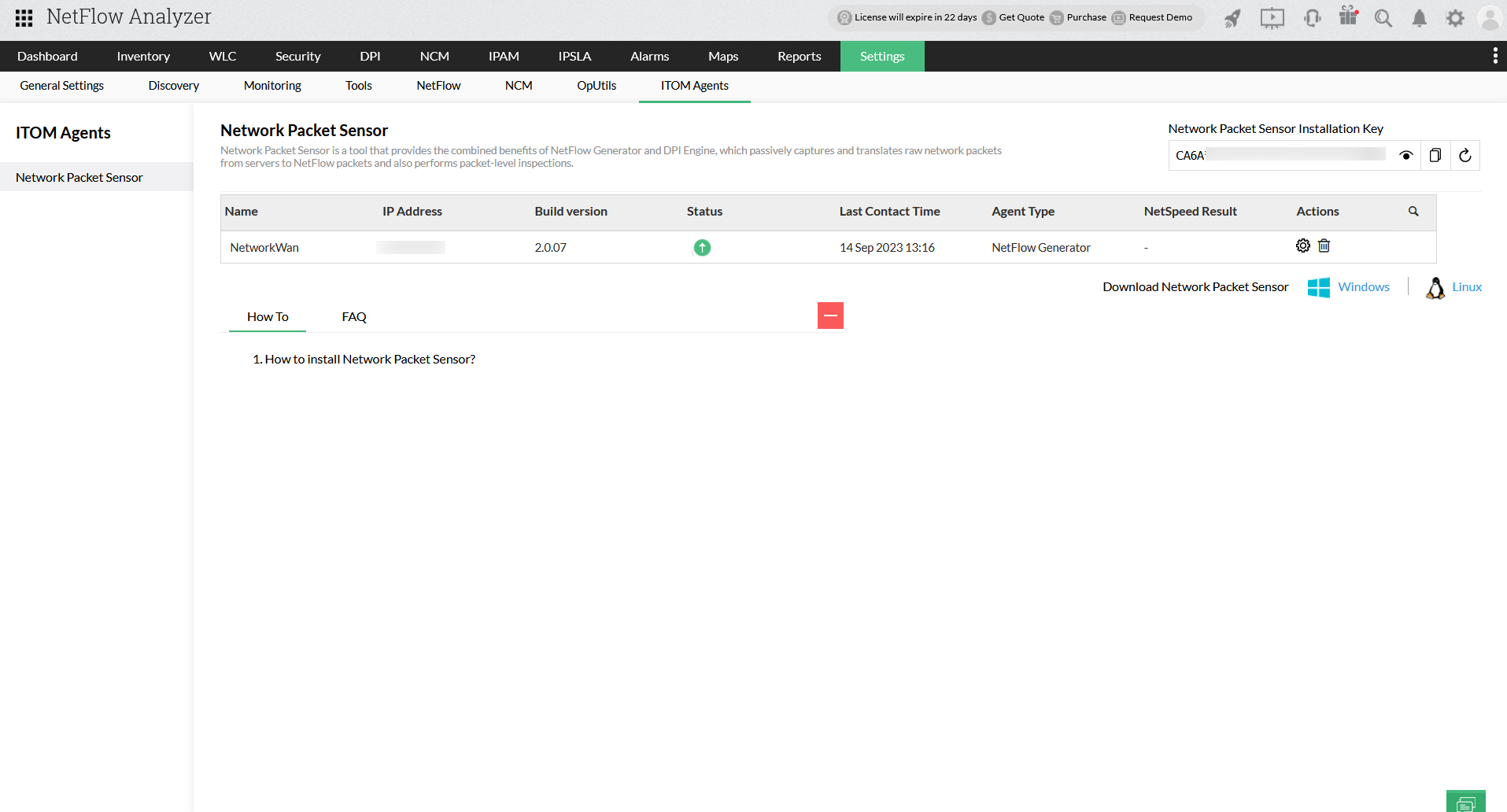Servers play a critical role in a network's performance, which means maintaining their optimal capacity is essential. Enterprises need to provide ample agility, security, and flexibility with AI, ML, and cloud technologies weaved into their IT; in this regard, and server traffic monitoring has become imperative. Monitoring communication regularly, tracking the context of traffic, and identifying bottlenecks allows you to understand how the server is handling your network's data and if there are any security issues that need to be addressed.
Without server traffic monitoring, you risk:
NetFlow Analyzer is flow-based bandwidth monitoring software that supports multiple technologies like NetFlow, sFlow, J-Flow, IPFIX, and so on. As a multi-vendor-based solution for traffic analysis needs, it also monitors traffic of non-flow exporting devices, like servers, with the new NetFlow Generator agent.
NetFlow Generator is an agent-based feature available in the Network Packet Sensor module, helping organizations monitor network traffic of non-flow exporting devices. NetFlow Generator operates by translating data packets into NetFlow packets and sending them to NetFlow Analyzer's listener ports to show network traffic patterns and provide bandwidth usage reports.

NetFlow Analyzer offers visibility into the traffic of all kinds of servers, including applications and database servers, to access the quality and quantity of available network resources. You can find the server's top conversations, IP addresses, and applications to derive insights on the context of bandwidth utilization. With this detailed server traffic monitoring, you can identify, analyze, and generate reports on performance and security, all within a single console.
As an enterprise scales, the major issue lies in identifying how the network is being used and what's causing errors and lag. This is especially difficult when you have to go through thousands of interfaces to analyze traffic. With NetFlow Analyzer's server traffic monitor, you can create logical groups by devices, applications, access points, interfaces, and IP addresses based on branches or departments, and get an overall analysis of all traffic data. With such grouping, you can monitor traffic on servers> to keep track of how critical departments of your organization are consuming bandwidth and allocate resources accordingly.
Having sufficient bandwidth for your organization is essential to deliver reliable network speeds. But there may be a lot of applications running daily in your organization, and ensuring that the business-critical ones get enough bandwidth is imperative. Traffic shaping with NetFlow Analyzer allows you to prioritize traffic by modifying policies based on factors such as packet delay and latency, ensuring support for important business services. You can apply policies and measure their effectiveness with class-based quality of service (CBQoS) graphs that provide pre-policy and post-policy traffic reports.
Taking proactive approach to monitoring the traffic on server is an essential step to keeping it reliable and error-free. Server failures, like slowness in processing requests, can create a domino effect to other elements in your organization, and you need to know about incidents before they grow in intensity. NetFlow Analyzer's threshold-based server traffic alerts give you the advantage of defining a baseline traffic behavior by different types like volume, speed, and utilization, and alerts you when there's a deviation from this. With the intelligent traffic control features, you can configure the threshold limits with corresponding severity.
Monitoring and planning network growth go hand in hand as enterprises scale. By analyzing the server traffic data over time, you can draw conclusions about what's necessary for your network to function without hitches in the future. NetFlow Analyzer's billing, capacity planning, and forecast reports use dynamic technologies like AI and ML to predict bandwidth utilization and application behavior over time. This enables you to spend your budget only for the upgrades that matter the most.
Server traffic management involves analyzing the percentage of network bandwidth utilized so that you can regulate your network's usage to ensure easy accessibility for all business-critical operations. Reliable uptime and availability are the core objectives for many enterprises, especially distributed networks.
Server traffic monitoring helps distributed enterprises to: